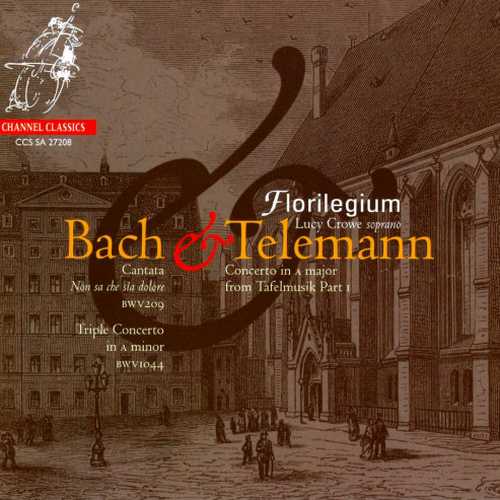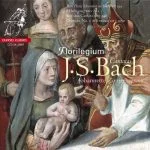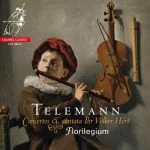
Composer: Johann Sebastian Bach, Georg Philipp Telemann
Performer: Florilegium
Format: DSD64 (dsf tracks)
Label: Channel Classics
Release: 2017
Size: 2.69 GB
Recovery: +3%
Scan: yes
Georg Philipp Telemann:
Concerto In A-Minor From Tafelmusik Part 1
01. Largo Telemann
02. Allegro Telemann
03. Gratios Telemann
04. Allegro Telemann
Johann Sebastian Bach:
Cantata ”Non Sa Che Sia Dolore”
05. Sinfonia
06. Recitative ”Non Sa Che Sia Dolore”
07. Aria ”Parti Pur, E Con Dolore”
08. Recitative ”Tuo Saver Al Temp e l’eta Contrasta”
09. Aria “Ricetti Gramezza E Paverno”
Triple Concerto In A-Minor
10. Allegro
11. Adiago, Ma Non Tanto, E Doce
12. Allabreve
At the time of Johann Kuhnau’s succession to the post of Cantor of St.Thomas’ Church, on the death of the previous incumbent, Johann Schelle, in March 1701, Georg Philipp Telemann’s presence in Leipzig was not without irritation to the newly appointed Cantor. Although ostensibly a law student, Telemann’s compositions had so impressed one of the city’s Burgomasters that he was rewarded with a fortnightly commission for St.Thomas’, to be accompanied by ‘ample remuneration’. Perhaps noting Telemann’s own observation of Kuhnau – ‘his frail constitution leads one to expect his early death’ – the council reassured the twenty-one year old student of his suitability for the post. Defying all predictions, however, they had to wait over twenty years for a similar opportunity. Kuhnau died on 5th June 1722. Telemann was by this time a musician of considerable repute, established in Hamburg. There were five initial applicants for the newly vacant post, including Telemann. The Leipzig council weren’t going to let him slip the net a second time, and, after complying with his request to be exempted from teaching Latin, he was unanimously elected to the post. Whether Telemann gave serious consideration to the post or not remains unclear, but following the success of his petition to the Hamburg city council for a pay increase, he declined the position. After a second election in 1723, the Darmstadt court capellmeister Christoph Graupner was appointed, but when he failed to obtain release from his employer, Johann Sebastian Bach took his place. And so the two great composers’ paths crossed; yet the different directions their lives would take was evident from early on: for Telemann the new galant style, for Bach the perfecting of his contrapunctal skills….. When Johann Sebastian Bach was appointed Kantor in 1723 to the church of St Thomas, Leipzig, he may have hoped to augment his salary by regular commissions for the composition of secular cantatas for special occasions. But in the event, his expectations were only partially realised. The few commissions Bach received were for royal occasions, such as birthdays, a royal visit to Leipzig by King August III of Poland, homages to University professors and weddings…



